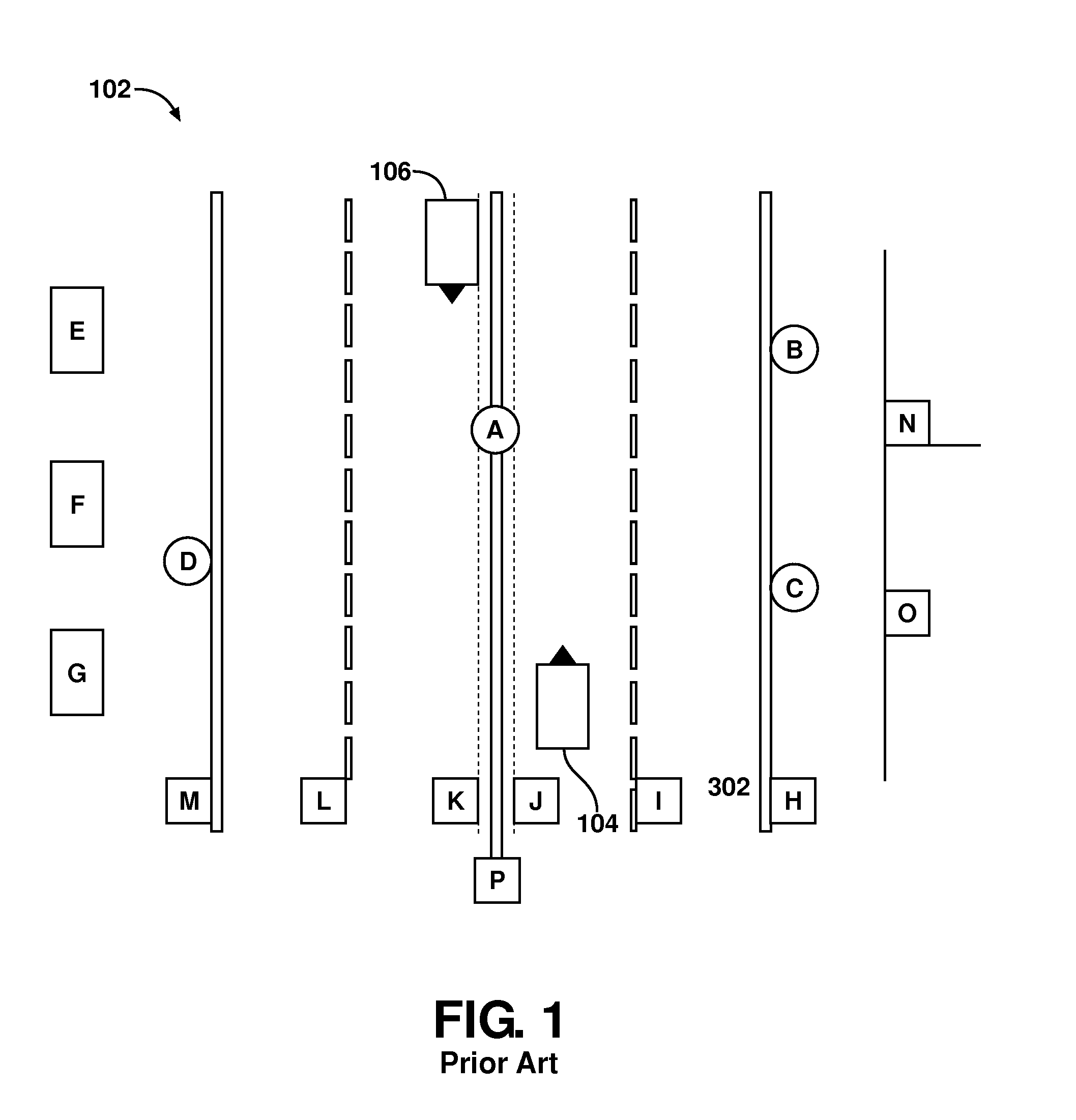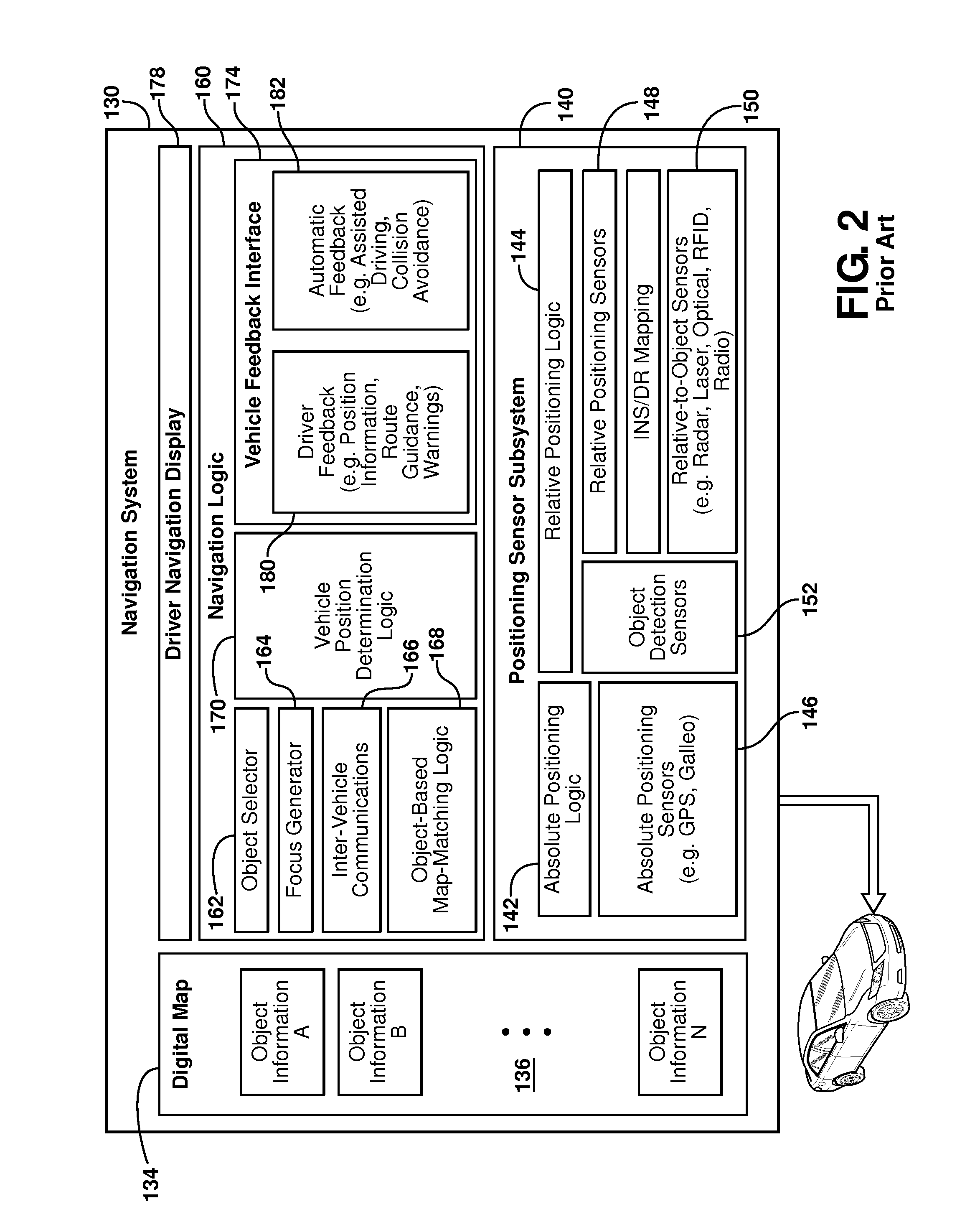System and method for vehicle navigation using lateral offsets
a technology of lateral offset and vehicle navigation, applied in the field of digital maps, geographical positioning systems, vehicle navigation, can solve the problems of system with inertial sensors accumulating errors, prone to small amount of positional errors, and prone to accumulating small errors, etc., to achieve enhanced driver assistance operations, easy computation, and enhanced driver assistance features
- Summary
- Abstract
- Description
- Claims
- Application Information
AI Technical Summary
Benefits of technology
Problems solved by technology
Method used
Image
Examples
Embodiment Construction
[0058]This invention relates specifically to an improved method and apparatus or system for obtaining an object's position, i.e., of a vehicle on a road, with much greater accuracy than purely through GPS / A-GPS and traditional map matching techniques. The increase in accuracy is not in the physical x, y, z spatial location obtained from GPS, but results from the fact that spatial position relative to some other pre-defined / pre-located physical object can be determined with far greater accuracy than a GPS-derived surface location by means of suitable on-board sensors, like that described above in connection with US 2008 / 0243378. In addition to the known teachings, this invention sets forth an efficient and practical implementation method whereby only one dimension (1D-lateral) relative distance can be used to effect the advantageous attributes of this concept, thereby lowering the cost of electronic processing, storage, and related equipment requirements.
[0059]Mobile mapping vehicles...
PUM
 Login to View More
Login to View More Abstract
Description
Claims
Application Information
 Login to View More
Login to View More - R&D
- Intellectual Property
- Life Sciences
- Materials
- Tech Scout
- Unparalleled Data Quality
- Higher Quality Content
- 60% Fewer Hallucinations
Browse by: Latest US Patents, China's latest patents, Technical Efficacy Thesaurus, Application Domain, Technology Topic, Popular Technical Reports.
© 2025 PatSnap. All rights reserved.Legal|Privacy policy|Modern Slavery Act Transparency Statement|Sitemap|About US| Contact US: help@patsnap.com



